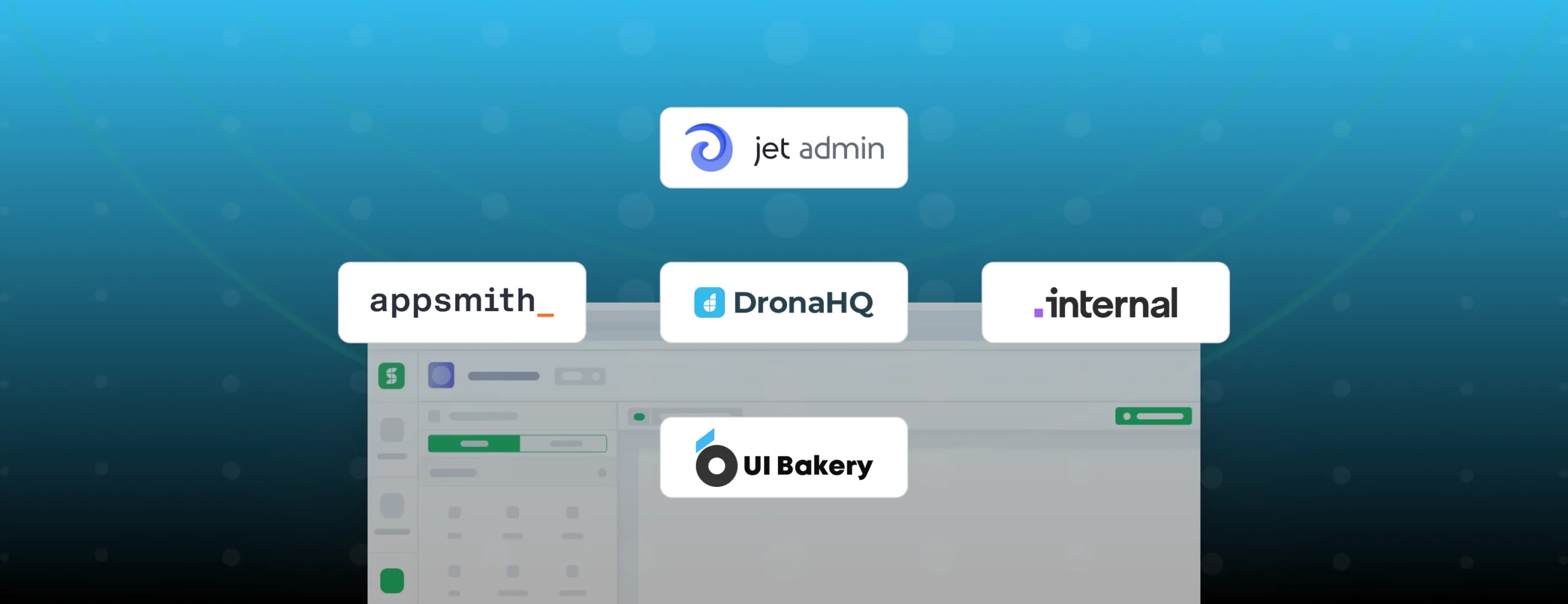
Ways to mitigate Low-code Security Risks
Low-code tools are a great fit for enterprises planning to speed up their application development journey, for it enables the broader IT and business community to create high-functioning applications. In fact, reports predict that by 2025, 65% of projects will be developed using low code. This is because there is a very evident appeal of low-code offering feature-rich capabilities to make application building seamless and faster.
That being said, not every low-code tool is perfect. Each is crafted to fit a specific use case; and so are its features and security mechanisms. Every individual low-code platform comes with its own set of security measures and concerns. Read on as we discuss some common security concerns associated with low code and ways to overcome them.
Security concerns for low-code and no-code development
Here are some common security concerns you may encounter if you do not choose the right low-code platform-
Data leakage
By default, the concept of low code is creating solutions with pre-built modules – API integration connections, DB integrations, and ready UI elements. So with that comes the opportunity for more non-tech people to dabble in app development. With this comes vulnerabilities and the chances of data leakage – say the user integrates the app into the customer database and an error in the formula exposes the entire customer list.
Suppose the low-code platform is not carefully constructed and reviewed. In that case, they can create instances of shadow IT, which means internal data can be moved and used outside the organization’s traditional boundary without IT department approval. Shadow IT may sometimes improve productivity and drive innovation, but it introduces serious security risks through data leaks, potential compliance violations, and more.
Privilege Misuse
Some low-code applications use the identities provided by the application creator rather than using service identities. This implies that the end-users have control over who has access to the applications they create. This can lead to privilege abuse, and a threat actor could easily access and manipulate the application environment by using credentials if they fall into the wrong hands.
For example, a developer makes a simple application to see database records. The application is set up such that each user can only view records that are relevant to them. The programme is set up, though, so that the user is implicitly given access to the connection to the underlying database. A user of the programme can connect directly to the database and have complete access to all records.
Visibility issues
It is crucial for administrators to keep an eye on what employees are creating. Otherwise, it becomes challenging to manage their activities. Some low-code platforms do not allow any visibility to admins to keep track of the applications being built on these platforms. This can also lead to businesses failing to track their security requirements.
Let’s say, some platforms offer admins the ability to be an owner of every application separately but do not allow them to see the application otherwise. So to take a look at the application, admins must resort to an active change.
Insecure authentication
Low-code applications connect to other enterprise applications, resources, and data. However, most citizen developers don’t have the authentication expertise to ensure that connections to data sources are secure. They are not knowledgeable about application security best practices.
An enterprise must be aware of the security risks involved while adopting a low-code platform. Recently, organizations have started using DevSecOps to fulfill the security gap in low-code development to ensure the application is protected from start to finish within a security framework.
Let’s try to understand with the help of an example. Imagine a developer creating a basic application to view records from a database. The application allows each user only to view related records. But the application is configured in such a way that the underlying database connection is shared with its users. This way an application user can use the database connection directly, gaining full access to all records harming data integrity.
Application misconfigurations
Low-code platforms empower developers to create customized, tailored applications at an accelerated
speed. But unfortunately, these can come at a cost. This makes way for the users to unintentionally configure applications and make them publicly available, putting sensitive data at risk. For example, Microsoft Power Apps was in the news after a misconfiguration where 38 million data records were configured to allow public access.
Vendor lock-in
Vendor lock-in can be one of the major disadvantages of low-code platforms. This leads to many people believing that they will have to work with the same vendor every time, creating concerns among enterprises. The same platform must be used with no source code to make any changes to solutions created using that platform.
A few platforms offer open code and frameworks to enterprises. This means their code is clean and can work anywhere, helping enterprises maintain their application without using the platform. Some platforms don’t allow you to roll out any improvements in your application after you quit that platform.
Insecure code
Even if the name suggests otherwise, low-code and no-code platforms still operate with code. This means the platform developers do all the high-level coding, allowing the end users to use pre-provided code functionality. This is a great way to empower citizen developers to build their dream applications.
But sometimes, it may get problematic when the code used is insecure and extrapolated across organizations and applications. One way to address this problem is to ask the platform vendor for security scanning results for the code used within the platform.
For example, directory structures, configuration information, IP addresses, and passwords- to attackers can be exposed due to poor design and insecure code.
Lack of knowledge and awareness
Low-code platforms enable developers of all levels to build an application of their choice. But most of the time, non-technical users are unaware of the security practices. Additionally, the absence of safety knowledge is a potential weakness that can call for security hazards.
It is important for enterprises to be fully aware of the security risks involved and the security measures offered before approaching a low-code development platform. You can request industry certifications such as ISO 27001 and SOC2 from the vendor, which can provide assurance about the organization’s operational and security controls.
How to mitigate risk from low-code/no-code development?
Fortunately, there are several ways to overcome the security risks imposed by low-code platforms. Here is how-
Adopt the right platform
This goes without saying. Adopting the right low-code platform can help enterprises minimize risk to a significant extent. Numerous low-code platforms are available in the market, most offering the same basic features like drag-and-drop functionality, in-built templates, APIs and integrations, and so on.
But there is more to these basics that competent low-code platforms should offer for a risk-free, secure development journey. Here are the essential capabilities you should look for in an enterprise-grade secure platform.
Self-Hosting
Low-code platforms must offer self-hosting capabilities to safeguard uptime, access control, integrity, and reliability. Low-code platforms like DronaHQ empower enterprises to host their apps as they like and however they like. It also offers instant deployments with minimal fuss or configuration.
User access management
Some of the best low-code platforms offer customizable role-based access control so that users can seamlessly manage large, complex user bases. User access management ensures that you give users the exact permissions and exposure they need to carry out their responsibilities.
API and Database Permissions
One of the key metrics to determine the efficiency of low-code platforms is how they manage databases, APIs, and integrations. Most enterprises use a large number of tools, implying a higher degree of integrability. The best platforms should allow users to integrate and import data and logic from any source, system, or service, including legacy systems, and offer a high degree of portability.
Audit logs
Audit logging means documenting activity within the software systems used across your organization. It records the occurrence of an event, the time at which it occurred, the responsible user or service, and the impacted entity.
This feature is crucial to identifying malicious users and activities in your system. For a secure environment, you should look for platforms that automatically store information about run-level queries, API calls, etc.
App usage analytics
App analytics are useful in providing an in-depth and detailed analysis of the apps. It offers details like container time spent, microapp open, OS distribution, and total users. This is an important feature that enables admins and owners to investigate, examine, and interpret different activities like apps, workflows, and automation.
Perform static code analysis
Static code analysis addresses weaknesses in source code that lead to vulnerabilities. It is a debugging method that automatically examines the source code without having to execute the program.
This process is necessary to help developers understand their code base to ensure that it is compliant, safe, and secure. It can be done with the help of an analysis tool that compares the source code against a set of coding rules, highlighting inconsistencies and possible security issues.
Audit proprietary libraries
Checking proprietary libraries for security vulnerabilities may be a complicated process, but it is a key criterion for determining the effectiveness of a low-code platform. You might need a team of software engineers to head the process. Simply question the vendor on their security standards and examine proprietary libraries for potential risks.
Assess and verify the partners
It is important to assess your low-code tool provider before entering any agreement. Ensure to ask for security certifications, their track record on data breaches, customer testimonials, frequency of code scanning, and other security gaps.
Secure the APIs
APIs are the favorite spot for hackers to exploit since they provide communication between apps. You have to test these connections dynamically and automatically with an API scanner, ensure proper authorization, secure unexpired tokens, prevent exposure of keys, monitor API updates for new vulnerabilities, and so on.
Arrange security training for citizen developers
Low-code tools open doors for citizen developers to try their hands-on development. However, it is important to note that citizen developers are not typically trained in in-app security practices. Consider organizing security demonstrations and workshops to empower them to identify issues from the beginning.
Utilize the least-privilege-as-possible rule
Not everyone in your organization will have the same need and use for particular information. It is important to use secure-by-default settings whenever possible when assigning user capabilities.
How DronaHQ can help you secure your enterprise
DronaHQ offers the fastest and most secure way to build powerful applications across enterprises. Here is how we ensure to give our users an enjoyable and secure experience-
SOC-II and ISO 27001 certified
DronaHQ is SOC-II, ISO 27001, including GDPR compliant, and is battle tested across large enterprise organizations to secure enterprise data.
SSL encryption
All plans include SSL encryption to keep your data safe.
Secure Embed
With secure embed, allow only verified/logged-in users to access the app that is embedded in your product or portal.
User access permission
DronaHQ offers powerful role-based dashboard access and admin panel control to enable admins to manage user roles according to role hierarchy with utmost security.
Audit logs
DronaHQ’s enterprise plans offer audit logging where admins can view all information in a dashboard.
API and App Permissions
DronaHQ uses REST-based APIs for authentication and authorization purposes and provides restricted access to various resources based on the scope of the API key.
Self-hosting options
Deploy a self-hosted version of DronaHQ within your infrastructure or your network. You can build apps quickly while keeping your data secure in your VPC. Instantly satisfy PII compliance or HIPAA requirements. No data is ever stored in DronaHQ. Use DronaHQ with other on-premise infrastructures like Git or single sign-on (SSO).
Sign up now to start your exciting and secure journey with a 14-day free trial for the starter plan!




